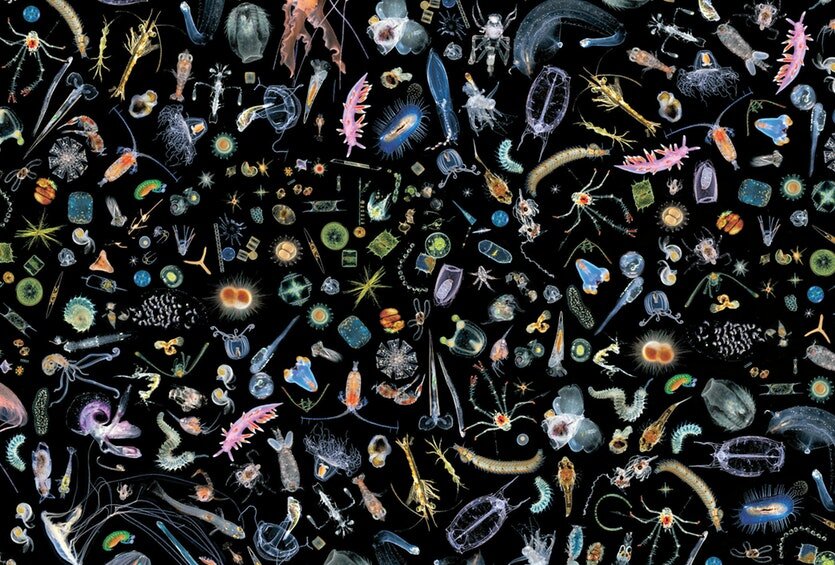Plankton
/First, a question from Audrey S. about Sea Stars: “Can Sea Stars mate and have children?” Yes! Sea Stars do something called broadcast spawning. They release their babies into the water where the young sea stars will float around as Plankton until they settle on the sea floor. Perfect introduction to today’s post: Plankton!
They provide most of the Earth’s oxygen, are the base of the food chain, can glow in the dark, and range in size from microscopic to 100 feet long but they cannot swim against a current. Plankton are one of the most important creatures to the ocean yet most people know very little about them. To be completely honest, I didn’t care about plankton until I took a class about them in college. It taught me how interesting and diverse plankton are as well as the role that plankton play in the ocean and in the rest of the world.
The character Plankton from Spongebob Squarepants was inspired by a real life zooplankton called a Copepod
What are Plankton?
The word “plankton” come from a Greek word that means “wanderer” or “drifter.” Plankton are classified as a organism (animal, plant, algae, bacteria) that cannot swim against a current. If it can swim against a current it is called “nekton,” meaning “swimming.” Organisms that stay on the sea floor without swimming are called “benthos,” meaning “bottom of the sea. Plankton are often divided into 2 categories: Zooplankton and Phytoplankton. The smallest plankton are single-celled and microscopic. The largest plankton is a sea jelly (jellyfish) called a Lion’s Mane Jelly which can reach over 100 feet in length.
Phytoplankton
Plankton that produce their own food by photosynthesis, using the energy from sunlight to make food. These are often single-celled bacteria and algae. Phytoplankton are important for a few reasons: Scientests believe they are responsible for producing most of the breathable oxygen that is in the Earth’s atmosphere. They are also the supporting base of the ocean (and of freshwater ecosystems) food chain. Without them, humans and other animals may not exist.
Zooplankton
These are plankton that need to eat other things in order to survive. They range from single-celled to sea jelly. Many animals in the ocean start off their lives as zooplankton and become nekton or benthos as they get larger. Sea stars, crabs, snails, anemones, barnacles, fish and more make the transition from plankto to nekton as they grow up. We call these animals “meroplankton.” “Mero-” means part so they are plankton for a part of their lives. Zooplankton are equally important to the food chain. They eat zooplankton and become food for larger animals.
The blue glow of bioluminescent plankton.
There are a few exceptions to these categories because some plankton produce their own food AND eat other plankton. What would you call these plankton that belong in both categories?
Bioluminescence
Many plankton are capable of producing light. (Bio=life, -lumin=light, -escence=state of being) Most that do this, produce the light by releasing chemicals that react to each other. In this reaction,a little light is produced. Scientists are still not 100% sure why they do this but the leading theories include: avoiding predators and attracting a mate.






